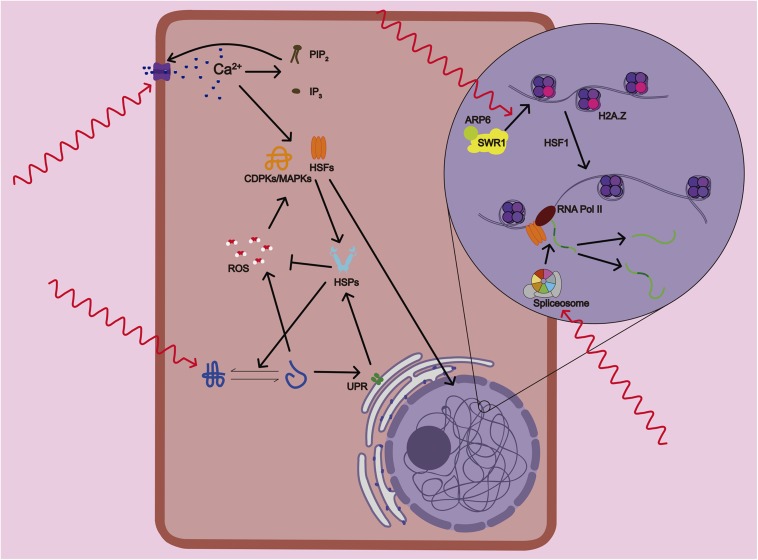FIGURE 1.
Mechanisms of temperature sensing and response in plants. Plants sense variations in temperature that are translated into the activation of several physiological and signaling processes. Primary temperature-sensing events start with the alteration of membrane fluidity and composition that causes the activation of calcium (Ca2+) channels. A feedback mechanism between the calcium and lipid signaling through accumulation of PIP2 and IP3, enhances even further the Ca2+ entry in the cell. Several heat shock transcription factors (HSFs) and calcium-dependent protein kinases (CDPKs and MAPKs) are activated by Ca2+ and ROS/redox signaling network. At the same time, the accumulation of unfolded proteins in the endoplasmic reticulum (ER) that are potentially toxic activates the ER stress that sets off the unfolded protein response (UPR), a cytoprotective signaling pathway. Subsequent activation of bZIP transcription factors induces the expression of Heat Shock Proteins (HSPs). HSPs protect proteins from misfolding and subsequent loss of functionality and help the detoxification of ROS. ARP6, a subunit of SWR1 complex, mediates the insertion of the variant histone H2A.Z in the nucleosome. At warmer temperatures, the antagonistic roles of H2A.Z and HSF1 seem to be required to activate heat response (HR) gene transcription. Lastly, the alternative splicing machinery allows the rapid adjustment of the abundance and function of key stress-response components.

